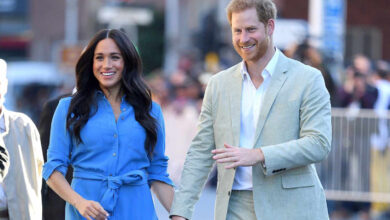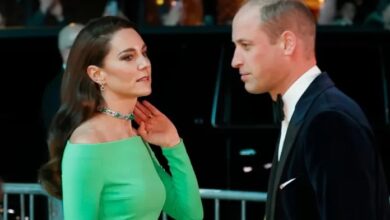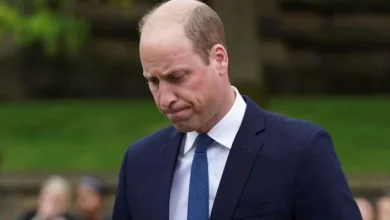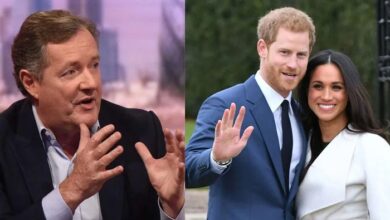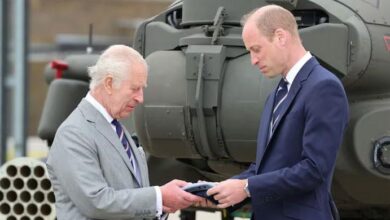Prince Harry Reveals Explosive Details About Kate Middleton and King Charles Feud Over Name Change

In a revelation that has caught the attention of royal watchers and enthusiasts, Prince Harry has shared startling details about a past conflict involving Princess Kate and King Charles.
According to recent reports, the conflict centered around Kate Middleton’s genuine desire to change her name prior to her engagement to Prince William, a move that inadvertently led to tension within the royal family.
Robert Jobson’s new biography sheds light on the fact that Princess Kate, before her official engagement to Prince William, had a genuine intention to adopt the name “Catherine” instead of “Kate.”
This decision was made in 2008, amidst growing speculation about the couple’s impending engagement. Kate’s desire to be addressed as “Catherine” was reportedly communicated to her close friends in a humorous email, signaling a possible shift in her public persona.
Jobson’s account suggests that Kate’s preference for “Catherine” was not merely about personal taste but also about preparing for her future role as Prince William’s wife.
“It was unclear if she did not like being called ‘Kate’ or whether it was part of a bigger preparation for her formal public role as Prince William’s future wife,” Jobson wrote.
This name change, while seemingly minor, was a significant step in her transition from a private individual to a public figure within the royal family.
The anticipation surrounding the engagement of Prince William and Kate Middleton was further fueled by the name change. William’s eventual proposal in 2010 and their marriage in April 2011 at Westminster Abbey cemented Kate’s new title as Catherine, Princess of Wales.
This title was used until September 2022, when Kate was bestowed with the title of Princess of Wales following the death of Queen Elizabeth II.
The intrigue surrounding Kate’s name change took a dramatic turn with revelations from Prince Harry’s memoir, Spare.
According to Harry, the name change caused a significant debate within the royal family, particularly involving King Charles.
The King, along with Queen Camilla, was reportedly concerned about having another royal cypher with the letter “C,” given that there were already two prominent cyphers—those of Charles and Camilla.
In his memoir, Harry recounted that there was a suggestion to change “Catherine” to “Katherine” with a “K” to avoid duplication of the cypher’s initial.
“This was because there were already two Royal cyphers with the letter C in them – and they didn’t want another. There were already two royal cyphers with a C and a crown above: Charles and Camilla. It would be too confusing to have another. ‘Make it Katherine with a K,’ they suggested,” Harry explained.
Harry’s anecdote reveals a layer of royal protocol and consideration that goes beyond public perception.
The suggestion to alter Kate’s name was a measure to avoid confusion within the royal hierarchy and to maintain clarity in the royal cyphers, which are symbolic representations of the reigning monarch and consort.
The revelation of this conflict highlights the intricacies and sometimes contentious nature of royal life. The name change issue underscores the delicate balance that exists within the royal family, where even seemingly minor decisions can have broader implications.
For Kate Middleton, the choice to be known as “Catherine” was part of a larger effort to align her personal identity with her public role, while also navigating the expectations and traditions of the royal family.
The conflict also serves as a reminder of the ongoing challenges faced by members of the royal family as they navigate their public and private lives.
Read More: Princess Beatrice’s 36th Birthday Sparks Controversy with China Backed Conspiracy Claims
The nuances of royal protocol and the personal preferences of individuals often intersect in complex ways, leading to tensions and negotiations behind closed doors.
As the royal family continues to evolve, the historical context of such conflicts provides valuable insight into the dynamics at play.
Kate Middleton’s transition from “Kate” to “Catherine” and the subsequent debate over her name reflect broader themes of identity, tradition, and the evolving role of modern royals.
In conclusion, Prince Harry’s revelations about the name change dispute between Princess Kate and King Charles offer a glimpse into the behind-the-scenes challenges of royal life.
The conflict over Kate’s name change illustrates the intersection of personal preference and royal protocol, shedding light on the complexities of navigating a high-profile role within the monarchy.
